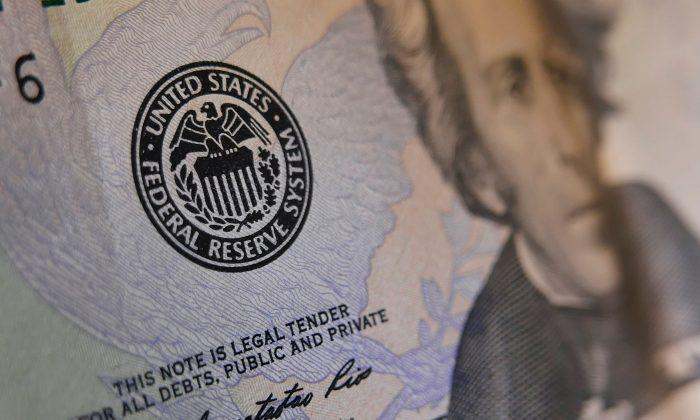While exuberant stock markets dominate the financial headlines after Donald Trump’s election victory, the sell-off in bonds heralds a warning. The Trump win means financial markets have to recalibrate to what looks to be a debt-binging U.S. economy that is expected to grow faster.
Economists say Trump’s fiscal plan could lift growth into the 3–4 percent range. The Federal Reserve’s most recent projections from September had the U.S. economy growing at about 2 percent.
The benchmark 10-year U.S. Treasury bond yield reached an 11-month high. It surged from 1.862 percent on Nov. 8—election evening—to 2.219 percent on Nov. 16. The 2-year bond yield, which is more sensitive to the Fed’s interest rate moves, has been trending higher and is above 1 percent for the first time since January.
A December Federal Reserve rate hike is now virtually a certainty.
Inflation Rising
While details on Trump’s policies are still unknown, the cornerstones of his campaign such as pro-growth policies—including corporate tax cuts and $550 billion in infrastructure spending—and protectionist trade policy, which implies higher tariffs on imports, will push inflation higher.
Different measures of core inflation have already been edging higher for most of 2016 given the ongoing improvement in the labor market.
The year-over-year change in oil prices is a key component to inflation. Assuming West Texas Intermediate remains in the $40–$50 ballpark in January, an annual increase of roughly 50 percent would be factored into the consumer price index (CPI) early next year.
Financial markets show that inflation expectations are at their highest since 2015. This is troubling the bond market—unlike the equity market, which appears to be oblivious to a Fed that may have to ratchet up the pace of future rate hikes, according to Deutsche Bank’s chief international economist Torsten Slok.
 “Fixed income [bond] markets and equity markets are following completely different narratives after the election,” Slok said in a note to clients. Equities are focused on higher growth, while bonds are focused on higher inflation, he said.
“Fixed income [bond] markets and equity markets are following completely different narratives after the election,” Slok said in a note to clients. Equities are focused on higher growth, while bonds are focused on higher inflation, he said.
The volatility of interest rates has skyrocketed, while equity volatility remains low. Volatility is often considered a measure of fear in markets.
At least, yields on longer-term bonds are rising faster than those of shorter-term bonds—a steepening of the yield curve. This is positive for the economy, as banks are rewarded for lending money for longer terms.
Riskier Debt
How the Trump administration is to pay for everything is still up in the air. In its latest sovereign credit risk assessment, Moody’s says very few governments can afford to take on more debt without loss of credit strength.
“A key challenge for the next U.S. administration remains how to contain the rising fiscal cost of entitlements,” according to Moody’s. The rating agency has not made any adjustment to the U.S. credit rating, which remains Aaa (stable).
In August 2011, Standard & Poor’s downgraded the U.S. credit rating from AAA to AA+, a move that sent shockwaves through the financial system when it was already dealing with Europe’s sovereign debt crisis.
The U.S. has always struggled to live within its means and has raised, temporarily extended, or changed the definition of its debt ceiling—the aggregate amount it can legally borrow—78 times since 1960.
“The medium-term impact of president-elect Trump’s economic and fiscal policies would be negative for U.S. sovereign creditworthiness if they were implemented in full,” according to Fitch. The rating agency doesn’t see the proposed tax cuts being sufficient to generate enough growth to make up for the loss in tax revenue.
The bond market is scared and wants clarity on the new administration’s policies, but it does look like a bear market for bonds has begun.
Inflation is the biggest threat to bonds as it eats away at the fixed stream of cash flows. The other threat to U.S. Treasury bonds is the potential for the country’s creditworthiness to be questioned, which could lead to higher borrowing costs to finance the Trump administration’s fiscal spending.
The bond market is indeed telling a very different tale than the stock market.
Follow Rahul on Twitter @RV_ETBiz






Friends Read Free